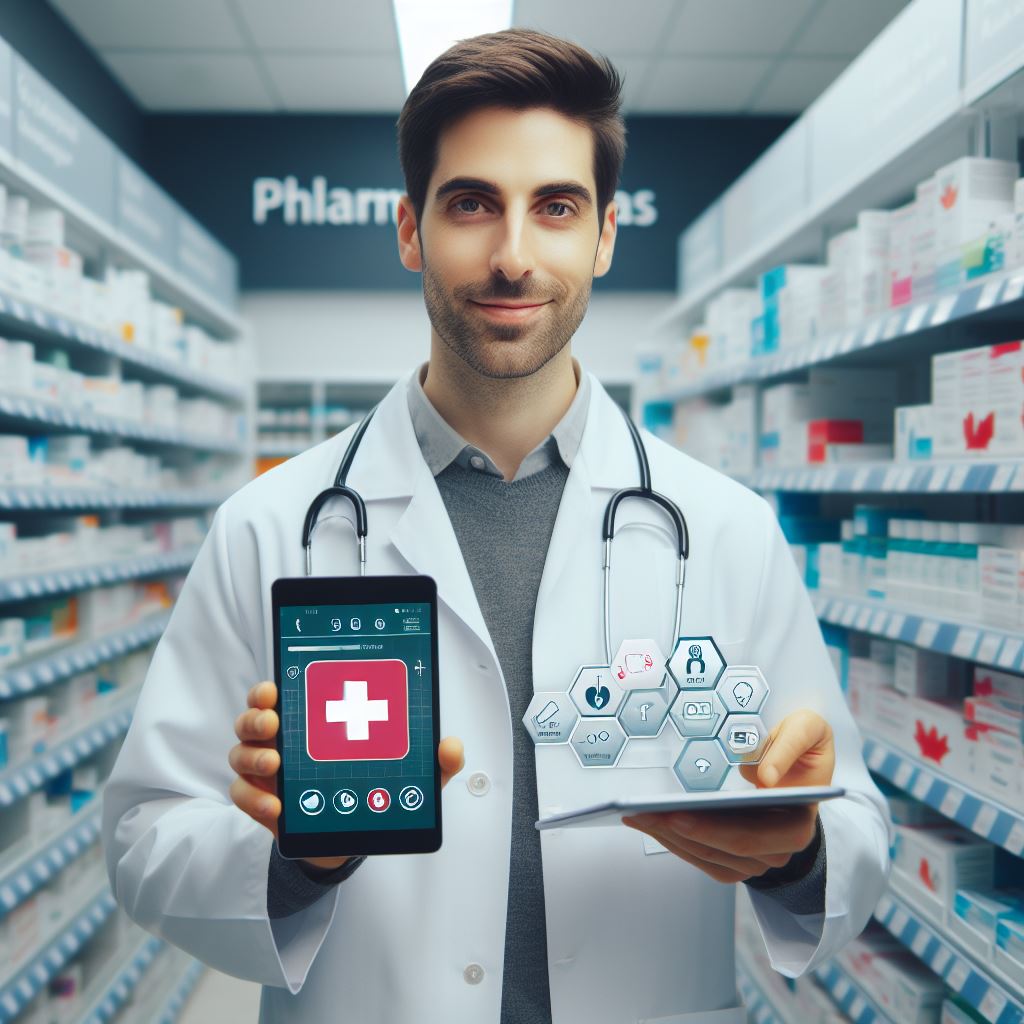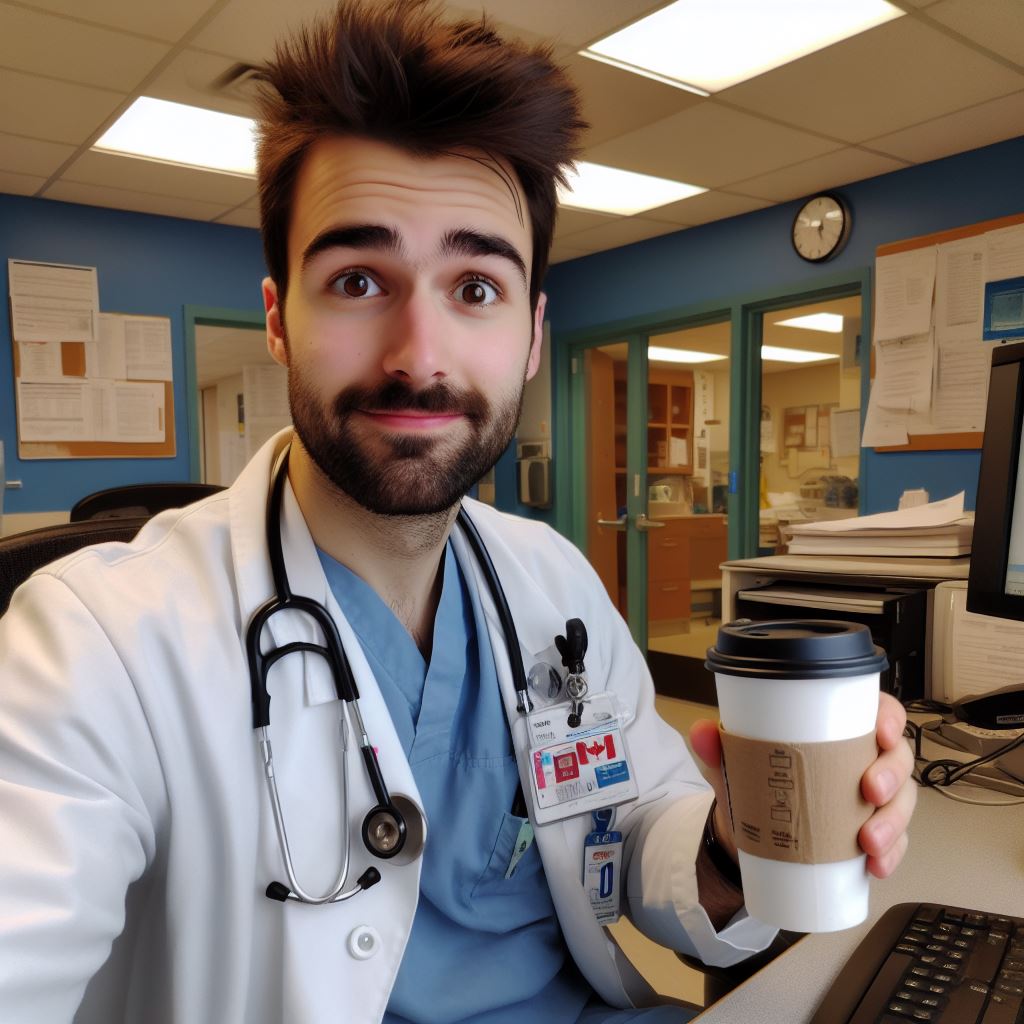Introduction
Good communication between pharmacists and patients is crucial for the successful management of medications and overall healthcare outcomes.
Pharmacist-patient communication goes beyond simply dispensing medications; it involves building a strong rapport, providing clear information, and addressing any concerns or questions the patient may have.
The first tip for effective communication is active listening.
Pharmacists should listen attentively to patients, allowing them to express their concerns fully.
By actively listening, pharmacists can gain a better understanding of the patients’ needs and fears, ultimately improving the quality of care provided.
Additionally, pharmacists should strive to use clear and simple language when explaining medication instructions. Using technical terms or confusing jargon can lead to misunderstandings.
Breaking down information into easily digestible chunks and using visuals or written materials can enhance the comprehension of patients.
Furthermore, it is important for pharmacists to encourage patient engagement.
By asking open-ended questions and involving patients in the decision-making process, pharmacists empower them to take an active role in their own healthcare.
This not only increases patient satisfaction but also improves medication adherence and health outcomes.
Lastly, pharmacists should be empathetic and understanding towards their patients.
Many patients may feel anxious or vulnerable, especially when discussing their health concerns.
Creating a supportive and non-judgmental environment allows patients to feel comfortable opening up and seeking guidance.
In fact, effective pharmacist-patient communication can greatly impact the overall quality of healthcare.
By practicing active listening, using clear language, encouraging patient engagement, and showing empathy, pharmacists can enhance patient satisfaction and improve medication management.
Establishing Rapport with Patients
When it comes to effective pharmacist-patient communication, establishing rapport is a crucial step.
Building a strong foundation of trust and understanding helps ensure that patients feel comfortable discussing their health and medication needs.
Here are some tips on how pharmacists can establish rapport with their patients:
A. Smile and Greet Patients in a Friendly Manner
When patients enter the pharmacy, a warm and welcoming greeting can make a significant difference in their experience.
Pharmacists should greet patients with a genuine smile and a friendly demeanor.
This simple gesture helps create a positive atmosphere and immediately puts patients at ease.
B. Use Open Body Language
Nonverbal cues play a crucial role in communication. To establish rapport, pharmacists should use open body language.
This includes keeping their arms uncrossed, maintaining eye contact, and having a relaxed posture.
Open body language signals approachability and encourages patients to engage in open and honest conversations.
C. Show Empathy and Active Listening Skills
Showcasing empathy towards patients is an essential aspect of building rapport.
Pharmacists should actively listen to patients, giving them their undivided attention.
Active listening involves focusing on patients’ concerns, asking relevant questions, and providing appropriate feedback.
Pharmacists should validate patients’ emotions and demonstrate genuine care and understanding.
D. Demonstrate Respect for Patients’ Opinions and Concerns
Respecting patients’ opinions and concerns is vital for building trust and a collaborative relationship.
Pharmacists should acknowledge that patients are active participants in their healthcare journey.
They should listen to patients’ viewpoints and preferences, allowing them to have a say in decisions regarding their medication.
By demonstrating respect, pharmacists can foster a patient-centered approach to care.
In short, establishing rapport with patients is an essential aspect of effective pharmacist-patient communication.
Through simple gestures like smiling and greeting patients warmly, using open body language, showing empathy, and respecting their opinions, pharmacists can create a supportive environment.
Building rapport helps patients feel comfortable discussing their health concerns, leading to better health outcomes and a more positive overall experience.
Clear and Effective Verbal Communication
A. Use simple and easy-to-understand language, avoiding jargon
Using language that patients can easily understand is crucial for effective pharmacist-patient communication.
Avoiding medical jargon and using plain language helps ensure that patients comprehend important information about their medications and treatment plans.
B. Speak at an appropriate volume and pace
Maintaining an appropriate volume and pace of speech is essential to ensure that patients can understand what you are saying.
Speaking too quickly or softly may cause confusion and hinder effective communication.
C. Ask open-ended questions to encourage patient participation
Engaging patients in the conversation by asking open-ended questions encourages them to actively participate in their healthcare decisions.
This fosters better understanding and helps pharmacists address any concerns or doubts patients may have.
D. Summarize key points to ensure understanding
To ensure that patients grasp important information, it is crucial to summarize key points at the end of the conversation.
This recap helps patients remember and comprehend the most critical aspects of their medication regimen.
E. Clear instructions for medication use and potential side effects
Clearly explaining how to take medications and any possible side effects is essential to promote patient safety and adherence.
Breaking down instructions into simple steps and providing examples can help patients follow the prescribed regimen correctly.
Effective verbal communication between pharmacists and patients plays a crucial role in ensuring patients’ understanding of their medications and treatment plans.
By following these tips, pharmacists can enhance patient communication and improve health outcomes.
Read: Pharmacist Salary Ranges in Canada
Non-Verbal Communication Strategies
Non-verbal communication is a powerful tool that pharmacists can utilize to enhance their patient interactions.
By employing effective non-verbal communication strategies, pharmacists can establish trust, convey empathy, reinforce verbal messages, and respect personal boundaries.
These strategies allow pharmacists to not only provide better care but also build strong relationships with their patients.
A. Maintain eye contact to establish trust and attentiveness
One essential non-verbal communication strategy is maintaining eye contact. When engaging with patients, it is crucial to establish trust and attentiveness by maintaining consistent eye contact.
This demonstrates that you are fully present and focused on them, making them feel valued and understood.
B. Use appropriate facial expressions to convey empathy
Another important aspect is using appropriate facial expressions to convey empathy.
Your face is a powerful communicator, and by displaying understanding through facial expressions like nodding or smiling when appropriate, you can effectively convey empathy and create a sense of connection with your patients.
C. Use gestures and body language to reinforce verbal messages
In addition to facial expressions, gestures and body language can reinforce verbal messages.
For instance, using hand gestures to illustrate medication instructions can make them clearer and easier to understand.
You can also use body language to show that you are actively listening, such as leaning slightly forward or maintaining an open posture.
D. Pay attention to personal space and respect boundaries
Personal space and boundaries should also be given consideration during pharmacist-patient communication.
Respecting personal space is important in fostering a comfortable and safe environment.
Be mindful of the patient’s personal space and avoid overcrowding or invading it without their consent, as it may create a sense of discomfort or unease.
Unlock Your Career Potential
Visualize a clear path to success with our tailored Career Consulting service. Personalized insights in just 1-3 days.
Get StartedTo effectively implement these non-verbal communication strategies, it is essential to be mindful of cultural differences or individual preferences.
Some cultures might have varying norms regarding eye contact, personal space, or the interpretation of certain facial expressions.
Adapting to these differences and being sensitive to individual preferences will enhance the quality of pharmacist-patient communication.
In essence, non-verbal communication plays a significant role in pharmacist-patient interactions.
By maintaining eye contact, using appropriate facial expressions, leveraging gestures and body language, and respecting personal space, pharmacists can enhance the effectiveness of their communication and build strong connections with their patients.
Understanding and implementing these strategies will lead to improved patient outcomes and satisfaction, contributing to a more positive healthcare experience overall.
Read: Understanding Canadian Pharmacy Laws
Active Listening Techniques
Active listening is a fundamental skill that pharmacists must master to effectively communicate with patients.
Being an active listener means fully engaging with the patient, understanding their concerns, and responding appropriately.
Here are some active listening techniques that can greatly enhance pharmacist-patient communication:
A. Learn to actively listen without interrupting
Interrupting a patient while they are expressing their concerns can make them feel unheard and devalued.
To actively listen, let the patient speak without interruption.
This shows respect and creates an environment where the patient feels comfortable sharing their thoughts and feelings.
B. Show genuine interest through nodding and making encouraging sounds
Non-verbal cues, such as nodding your head or making encouraging sounds, can convey your genuine interest in the conversation.
These simple gestures reassure the patient that you are actively engaged and focused on their needs.
Additionally, maintaining eye contact can further demonstrate your attentiveness.
C. Paraphrase and clarify patient’s concerns to show understanding
Paraphrasing the patient’s concerns and repeating them back in your own words indicates that you understand their perspective.
It also gives the patient an opportunity to clarify any misconceptions or provide additional information.
This technique shows empathy and validates their feelings, leading to a deeper connection and trust.
D. Avoid distractions and fully focus on the patient’s needs
Distractions can hinder effective communication. Minimize or eliminate any potential distractions, including checking your phone or allowing your attention to drift away.
Give the patient your undivided attention, actively listen to their concerns, and respond appropriately.
This focused approach demonstrates your commitment to their well-being.
In general, active listening techniques are powerful tools in pharmacist-patient communication.
By learning to actively listen without interrupting, showing genuine interest through non-verbal cues, paraphrasing and clarifying concerns, and avoiding distractions, pharmacists can create a supportive and trusting environment for patients.
This cultivates stronger relationships and ensures that patients feel heard and understood. Remember, effective communication is essential in providing optimal patient care.
Read: Latest Pharmacy Trends in Canada 2024

Overcoming Communication Barriers
Effective communication between pharmacists and patients is crucial to ensure optimal healthcare outcomes. However, several barriers can hinder this communication process.
Pharmacists should be aware of these barriers and use various strategies to overcome them.
A. Take cultural and language differences into account.
Cultural and language differences can create misunderstandings and hinder effective communication between pharmacists and patients.
To overcome these barriers:
- Respect and appreciate cultural diversity. Understand and value different cultural practices and beliefs.
- Use plain language and avoid medical jargon. Explain medication instructions in simple terms.
- Be patient and provide extra time for non-native speakers to understand and ask questions.
- Consider having bilingual staff or interpreters available to facilitate communication if necessary.
B. Address potential health literacy issues.
Health literacy refers to a person’s ability to obtain, process, and understand basic health information.
Low health literacy can impact medication adherence and overall health outcomes.
To address health literacy issues:
- Assess the patient’s health literacy level. Use validated tools or ask simple questions to gauge their understanding.
- Provide written materials in plain language, using clear instructions and avoiding complex medical terminology.
- Use the teach-back method to confirm patient understanding. Ask patients to explain medication instructions in their own words.
- Encourage patients to ask questions and seek clarification if they have difficulty understanding any information.
C. Utilize visual aids, such as diagrams or videos, when necessary.
Visual aids can enhance understanding and improve communication, especially for patients who are visual learners or have limited literacy skills.
Here’s how pharmacists can utilize visual aids:
- Create simple and easy-to-understand diagrams or infographics illustrating medication dosing schedules or usage instructions.
- Share educational videos or animations that visually demonstrate how to take medications correctly and manage side effects.
- Use pictograms or symbol-based communication aids to represent medication-related information.
- Ensure that the visual aids are culturally appropriate and tailored to the patient’s language proficiency.
D. Use technology tools, such as translation apps or text reminders.
Technology can play a vital role in overcoming communication barriers in the healthcare setting.
Pharmacists can leverage technology tools to improve pharmacist-patient communication:
- Use translation apps or software to facilitate communication with non-English speaking patients.
- Offer text or email reminders for medication refills, dosage reminders, or upcoming appointments.
- Utilize electronic health record systems to share accurate and up-to-date medication information with patients.
- Explore telehealth options for virtual consultations, especially for patients with limited mobility or those residing in remote areas.
By taking cultural and language differences into account, addressing health literacy issues, utilizing visual aids, and using technology tools, pharmacists can overcome communication barriers and ensure effective pharmacist-patient communication.
These strategies ultimately lead to better medication adherence, improved health outcomes, and increased patient satisfaction.
Read: How to Become a Pharmacist in Canada
Dealing with Difficult Situations
A. Remain calm and composed
Maintaining a calm and composed demeanor is crucial when facing difficult situations.
It allows pharmacists to think clearly and make rational decisions.
Taking a deep breath, slowing down, and focusing on the issue at hand can prevent escalating tensions.
B. Validate the patient’s emotions and concerns
Acknowledging and validating the patient’s emotions and concerns is essential for effective communication.
Empathy plays a significant role in building trust and showing that their feelings are being heard.
Active listening is crucial during this stage.
It involves giving the patient your full attention, maintaining eye contact, and providing verbal cues (such as nodding) to show understanding.
C. Employ effective problem-solving techniques
Effective problem-solving techniques can help find solutions to difficult situations.
Start by actively listening to the patient’s concerns and asking open-ended questions to gather more information.
Once the issue is fully understood, explore possible options, involving the patient in the decision-making process.
This collaborative approach empowers patients and increases their satisfaction with the outcome.
D. Seek guidance or involve other healthcare professionals if needed
In complex or challenging situations, pharmacists should not hesitate to seek guidance or involve other healthcare professionals.
Consulting with doctors, nurses, or other specialists can provide valuable insights and ensure the best care for the patient.
Collaboration with other healthcare professionals also demonstrates a commitment to the patient’s well-being and helps build a comprehensive healthcare team.
Generally, dealing with difficult situations in pharmacist-patient communication requires remaining calm, validating emotions, employing effective problem-solving techniques, and seeking guidance when necessary.
These strategies can help build strong relationships, promote patient satisfaction, and ensure optimal healthcare outcomes.
Providing Follow-Up Care and Support
Once a pharmacist has successfully communicated with a patient and provided them with necessary medications, their role does not end there.
Follow-up care and support are crucial for ensuring the well-being and satisfaction of patients.
Here are some tips on how pharmacists can provide effective follow-up care and support:
A. Offer contact information for further questions or concerns
It is essential to make patients feel that they have a trustworthy resource to turn to whenever they have questions or concerns about their medications.
Pharmacists should provide their contact information, such as phone numbers or email addresses, to patients.
This gesture creates a sense of accessibility and encourages open communication.
B. Schedule follow-up appointments or phone calls when appropriate
In some cases, patients may require additional guidance or monitoring after receiving their medications.
Pharmacists can schedule follow-up appointments or phone calls to check on the progress of the treatment, address any concerns, or adjust dosages if necessary.
This proactive approach demonstrates pharmacists’ commitment to patient well-being.
C. Provide educational materials for additional information
To empower patients and encourage their active participation in their treatment, pharmacists should provide educational materials that offer additional information on their medications or health conditions.
These materials can include pamphlets, brochures, or online resources that explain medication indications, potential side effects, and ways to manage their conditions effectively.
D. Demonstrate willingness to help and support patients beyond the initial encounter
Patients appreciate pharmacists who go above and beyond their primary responsibilities.
Pharmacists can demonstrate their willingness to help and support patients by addressing any concerns promptly, offering empathy and understanding, and exploring potential solutions.
Building a strong rapport through continuous support enhances patient satisfaction and trust in their pharmacist.
In a nutshell, providing follow-up care and support is an integral part of a pharmacist’s role in ensuring patient well-being.
By offering contact information, scheduling follow-up appointments, providing educational materials, and demonstrating willingness to help, pharmacists can effectively support their patients beyond the initial encounter.
Active engagement and ongoing communication contribute to improved patient outcomes and overall satisfaction.
Conclusion
In the realm of pharmacist-patient dynamics, effective communication reigns supreme.
Establishing rapport, active listening, and clarity are keystones for meaningful interactions.
Always maintain empathy, understanding, and patience during consultations.
Recap: Listen actively, show empathy, and communicate clearly.
The impact of adept communication on patient outcomes is monumental.
Improved understanding fosters patient compliance and better health outcomes.
Encourage ongoing refinement of communication skills.
Continuous enhancement benefits patients, enhances relationships, and elevates overall healthcare experiences.
Pharmacist-patient interactions thrive on clear, compassionate communication— an invaluable asset in healthcare settings.




